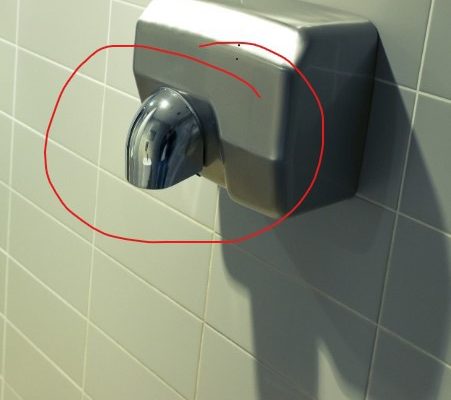A new study from the University of Connecticut and Quinnipiac University may make you feel both calm and upset if you are the type of person who avoids public bathrooms at all costs.
They thought that hand dryers that use hot air might be taking germs out of the air and putting it on people’s freshly washed hands without them knowing.
Scientists put petri dishes in different kinds of bathroom air to test this idea. They then brought the dishes back to the microbiology lab to see if bacteria grew on them.

There was only one colony of germs in a Petri dish that was left in the bathroom air for two minutes with the hand dryers off. For 30 seconds, however, hot air from a bathroom hand dryer caused up to 254 colonies of bacteria to grow in Petri dishes.
Most of the dishes had between 18 and 60 colonies of bacteria.
Did the germs grow inside the hand dryers, or did they come from the air in the bathroom and get pulled inside? Researchers put high-efficiency particulate air (HEPA) filters on the dryers to find out.
These filters would get rid of most of the germs in the air that goes through the dryer.
The number of bacteria in the petri plates had dropped by 75% when they put them back in the air from the hand dryers. On top of that, the researchers only found small amounts of germs on the hand dryer plugs.
They came to the conclusion that most of the germs that came from the hand dryers came from the air in the bathroom.
How did the germs get into the air to begin with? When you flush a toilet without a lid, it releases a fine mist of germs into the air.
This poop cloud could spread out over an area of up to 65 square feet (six square meters).
In a medical setting, aerosols from flushed toilets may be especially bad because they can spread Clostridium difficile.
Scientists put petri dishes in different kinds of bathroom air to test this idea. They then brought the dishes back to the microbiology lab to see if bacteria grew on them.

There was only one colony of germs in a Petri dish that was left in the bathroom air for two minutes with the hand dryers off. For 30 seconds, however, hot air from a bathroom hand dryer caused up to 254 colonies of bacteria to grow in Petri dishes.
Most of the dishes had between 18 and 60 colonies of bacteria.
Did the germs grow inside the hand dryers, or did they come from the air in the bathroom and get pulled inside? Researchers put high-efficiency particulate air (HEPA) filters on the dryers to find out.
These filters would get rid of most of the germs in the air that goes through the dryer.
The number of bacteria in the petri plates had dropped by 75% when they put them back in the air from the hand dryers. On top of that, the researchers only found small amounts of germs on the hand dryer plugs.
They came to the conclusion that most of the germs that came from the hand dryers came from the air in the bathroom.
How did the germs get into the air to begin with? When you flush a toilet without a lid, it releases a fine mist of germs into the air.
This poop cloud could spread out over an area of up to 65 square feet (six square meters).
In a medical setting, aerosols from flushed toilets may be especially bad because they can spread Clostridium difficile.



